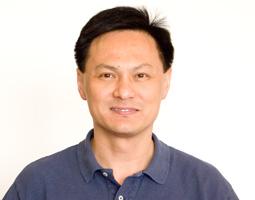Jianming Cao

Contact Information
Ph.D., University of Rochester, 1996
Dr. Cao received his Ph.D. in physics from University of Rochester in 1996. Upon graduating, he went to CalTech as a postdoctoral scholar to develop the ultrafast electron diffraction techniques. He joined FSU as a faculty member in 1999.
His current research interests focus on the development of ultrafast structural and electronic probes, and use them to study the dynamics in solids on the femtosecond (10-15 s) time scale.
Atomic motions on the fundamental time scale of a single atomic vibrational period (100 femtosecond to ~ 1 picosecond) ultimately determine the evolution of new phases in solids, the kinetic pathways of chemical reactions, and the biological functioning processes. Direct observation of these dynamical processes on this fundamental timescale with atomic resolution is crucial for a through understanding of the underlining mechanisms, which will have important scientific implications in solid-state physics, chemistry, biology and materials science.
During the past few years, we have developed a femtosecond electron diffraction (FED) technique with an unprecedented capability of directly measuring the ultrafast structural dynamics on the fundamental time scale of a single atomic vibrational period in solids. We are now applying this new technique to study several condensed matter physics problems with both fundamental importance and technological implications.
They include laser-induced ultrafast structural transformaitions in single- and poly-crystalline metals, in the semiconductor and metal nanoparticles, and the dynamical Jahn-Teller distortion in colossal magnetoresistance materials. The dynamical processes in these materials will be first initiated by a femtosecond laser pulse, which sets the zero of time. Then, the structural evolutions will be measured by taking the snapshots of diffraction images with femtosecond electron pulses at different times relative to the initiation laser pulse, in a way similar to the slow-motion picture. In addition to FED, we will also apply the femtosecond time-resolved optical spectroscopy measurements in the relevant degrees of freedom to obtain a more complete characterization of the dynamical behaviors in these materials.

